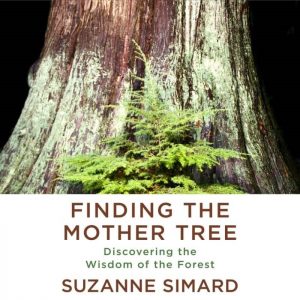Book Selection

NONFICTION | If there’s a celebrity in the world of forest ecology, it’s Simard, whose TED Talks about trees have been viewed by millions. Her first book blends memoir — the story of her upbringing in Canada as a descendant of loggers — with fascinating research about how forests are much like human communities, alive with messages, warnings and protective tips shared among neighbors.
In 1980, a 20-year-old silviculturalist hunched over a sickly young spruce planted in a clear-cut forest. She wondered why this particular seedling was dying, but nearby ones were not. To answer this question and all the other ones that stemmed from it, Suzanne Simard has spent decades with her hands in the soil, designing experiments and piecing together the remarkable mysteries of forest ecology.
Her research has built on the work of past researchers, as well as often overlooked Indigenous knowledge, to show that a forest is not a mere collection of individual trees competing for light and nutrients, but rather a sentient, interacting community. In her new book, Simard contends that at the center of a healthy forest stands a Mother Tree: an old-growth matriarch that acts as a hub of nutrients shared by trees of different ages and species linked together via a vast underground fungal network. Her argument is elegantly detailed here alongside a deeply personal memoir, with her story and that of the forest tightly interwoven. “We think that most important clues are large,” she writes when recalling this first seedling that sparked her curiosity, “but the world loves to remind us that they can be beautifully small.”
Simard, now a professor at the University of British Columbia’s Faculty of Forestry, comes from a long line of foresters, a dynasty of “fathers and sons who spent their lives felling timbers, a history knitted into our bones.” This was perilous work. To be a Simard meant sacrificing parts of your body to the forest: Both her uncles lost fingers, and her grandfather sheared off an ear. Simard Mountain and Simard Creek are just some of the historical tethers still linking this family to the inland forests of British Columbia.
